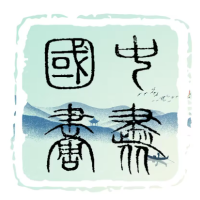蒋兆和,光绪三十年生于泸州。二十世纪水墨人物画宗师,以独特现实主义风格与深厚功力,引领画坛转型,奠当代绘画多元发展基础。其艺途历尽坎坷,然成就光耀,泽备后世。
Zhaohe Jiang, born in the 30th year of Guangxu in Luzhou, is a grandmaster of 20th-century ink figure painting. With his unique realistic style and profound skills, he led the transformation of Chinese ink figure painting, laying a crucial foundation for the diverse development of contemporary ink figure painting. Despite the hardships and misunderstandings in his artistic career, his achievements shine brightly, benefiting future generations.

蒋兆和,人物画宗师,以写实风格见长,造型严谨,重视真实感。幼时以画像为生,积累造型功力,后融传统人物画风,追求形神兼备。其画作通过严谨造型,传达人物品格、气质、精神,表现内心情感。蒋兆和出身书香世家,幼年随父习诗文书法。十六岁时,因家变孤身赴沪谋生,凭自学素描油画技艺,任百货公司橱窗、广告牌、商标及时装设计。民国十八年,以油画《江边》入中国首届美展,画上海贫困黄包车夫生活状况,显其对底层人民深切同情与关怀。抗战爆发,蒋兆和加入临时青年爱国宣传队,为十九路军总指挥蔡廷锴、蒋光鼐绘画像,作品广泛传播,激励众多国人投身抗战。战火迫使其离沪入北平,结束十年上海生涯。北平时期,蒋兆和以水墨画《卖小吃的老人》崭露头角,虽为水墨,素描痕迹明显。后创作《与阿Q像》《街头叫苦》《卖二胡》《卖紫桐》等,重心转水墨人物画,此转变源于对生活深刻观察与思考,或命运静默安排。
Jiang Zhaohe, a master of figure painting, excelled in a realistic style with meticulous attention to realism and rigorous modeling. From a young age, he earned a living by making portraits, accumulating modeling skills, and later incorporating traditional figure painting styles, striving for both form and spirit. His works convey the character, temperament, and spirit of figures through precise modeling, expressing inner emotions. Born into a scholarly family, Jiang studied poetry and calligraphy under his father. At sixteen, due to family changes, he moved to Shanghai alone, working in department stores with self-taught skills in sketching and oil painting. In 1929, he participated in the first National Art Exhibition of China with the oil painting "By the River," depicting the life of a poor rickshaw puller in Shanghai, showing deep sympathy for the underprivileged. With the outbreak of the Anti-Japanese War, Jiang joined the Temporary Youth Patriotic Propaganda Team, painting portraits for military leaders, which spread widely, inspiring many to join the resistance. Forced to leave Shanghai, he moved to Beijing, ending his decade-long stay in Shanghai. In Beijing, he gained recognition with the ink painting "Old Man Selling Snacks," displaying clear sketch traces despite being an ink work. He then created works like "With Ah Q," "Crying on the Street," "Selling Erhu," and "Selling Zitong," shifting focus to ink figure painting, a change resulting from deep observation and reflection on life, or perhaps a silent arrangement by fate.
蒋兆和将写实与传神结合,造型与神韵相辅相成,打破传统人物画限制。其作品源自亲身经历,常见场景化为艺术,赋予内心情感,刻画人物特征与眼神,传达精神状态,造型严谨,艺术魅力充盈,影响深远,独树一帜。
Jiang Zhaohe combined realism with expressive spirit, merging modeling and charm, breaking the constraints of traditional figure painting. His works, drawn from personal experience and common scenes, transformed into art with inner emotion, portraying characters' traits and expressions to convey their mental state. His rigorous modeling and artistic charm left a profound impact, establishing a unique style.
与徐悲鸿相识,于蒋兆和艺路影响深远。徐悲鸿赏其素描油画作品,邀其入画室,令蒋碧薇教法文,荐其出国留学,虽未成行,然徐悲鸿改良中国画之理论深植其心,坚定现实主义创作方向。技法上,蒋兆和深受徐悲鸿影响,形成中西融合绘画风格,吸收西画素描油画严谨准确比例结构与透视关系,结合中国画传统精神之“神似”,创新绘画语言,开创写意人物画新风。蒋兆和画作以线条变化表现物象精神特征,强调“骨法用笔”造型原则,“以墨随笔,以笔取形,两者互相发挥”,创中国画素描教学体系,写实水墨人物画继承传统白描手法,吸收西方素描技法科学元素,笔墨与造型相辅相成。
Meeting Xu Beihong profoundly influenced Jiang's artistic journey. Xu appreciated his sketching and oil painting, inviting him to his studio, having Jiang's wife teach him French, and recommending him for overseas studies, though it didn't materialize. Xu's theories on Chinese painting reform deeply rooted in Jiang, solidifying his realist approach. Jiang's techniques, influenced by Xu, formed a blend of Chinese and Western styles, incorporating the precise proportions and perspective of Western sketching and oil painting with the traditional Chinese spirit of "likeness in spirit." He innovated painting language, pioneering a new style of expressive figure painting. His works utilized line variation to capture the essence of objects, emphasizing the "bone method" in brushwork, creating a teaching system for Chinese painting sketching, integrating Western scientific elements into traditional white drawing, combining brush and ink with modeling.

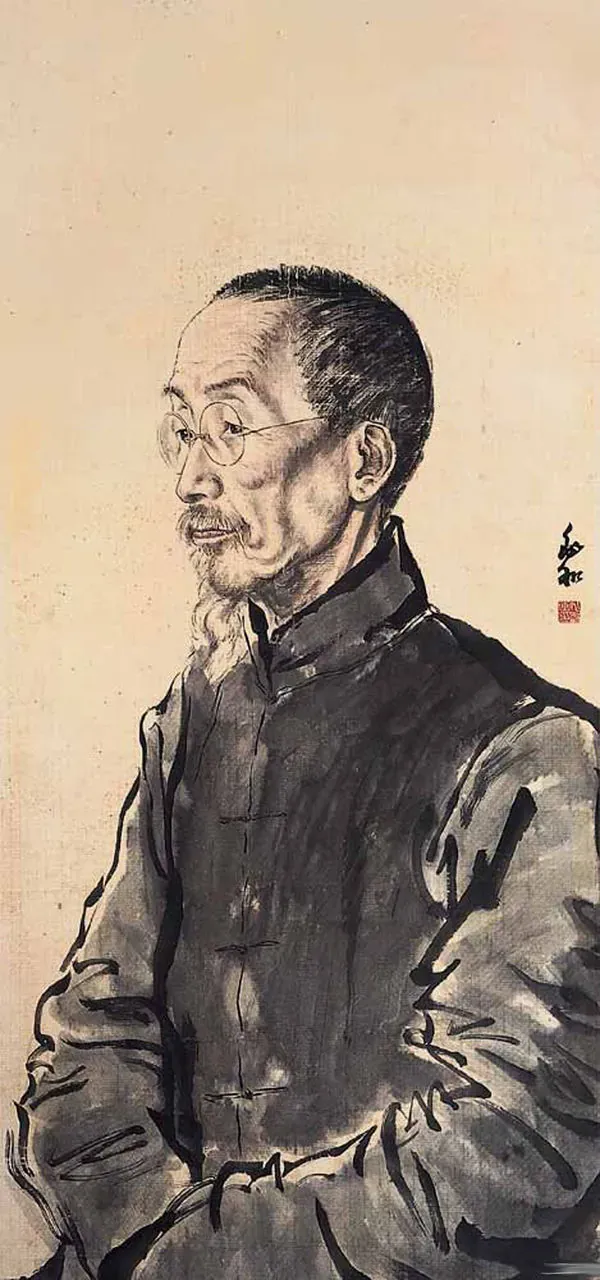
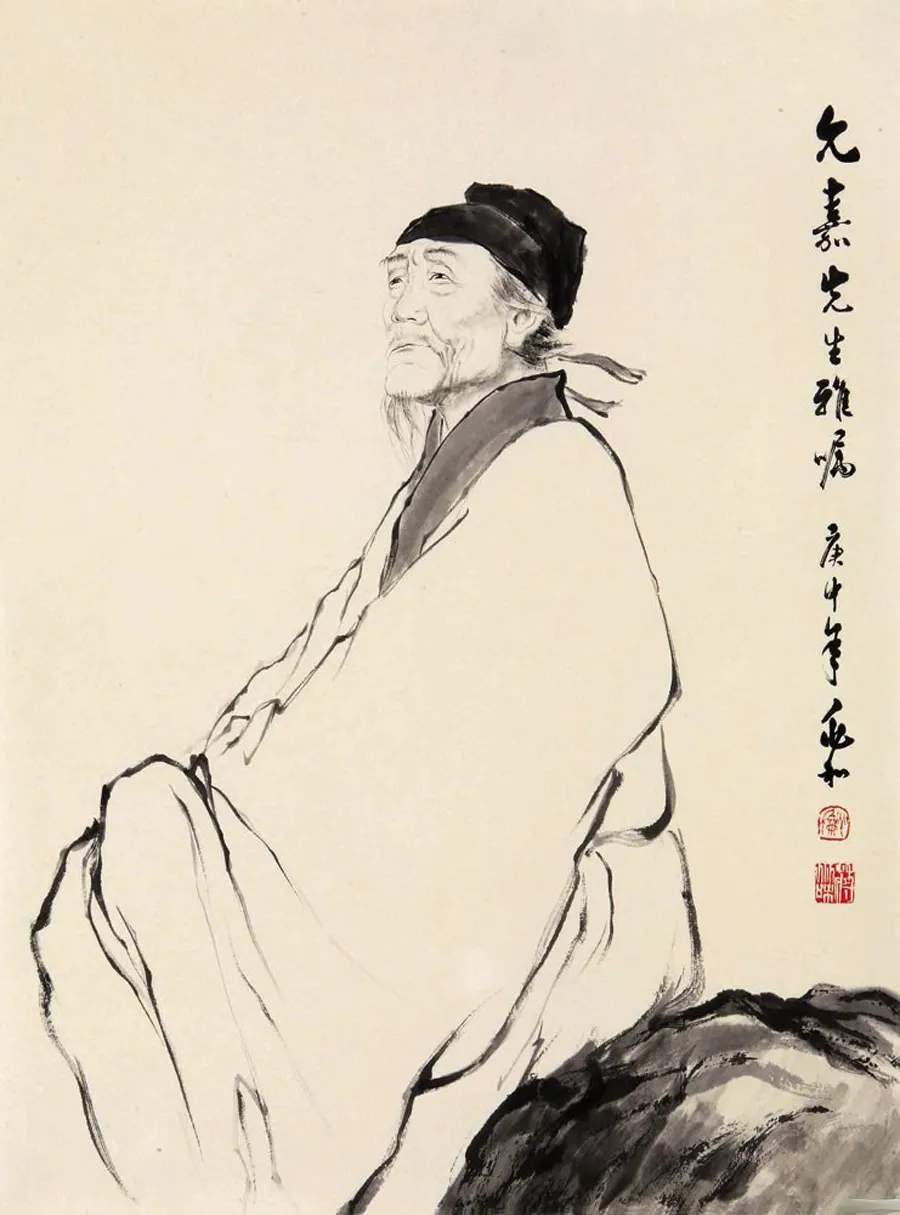
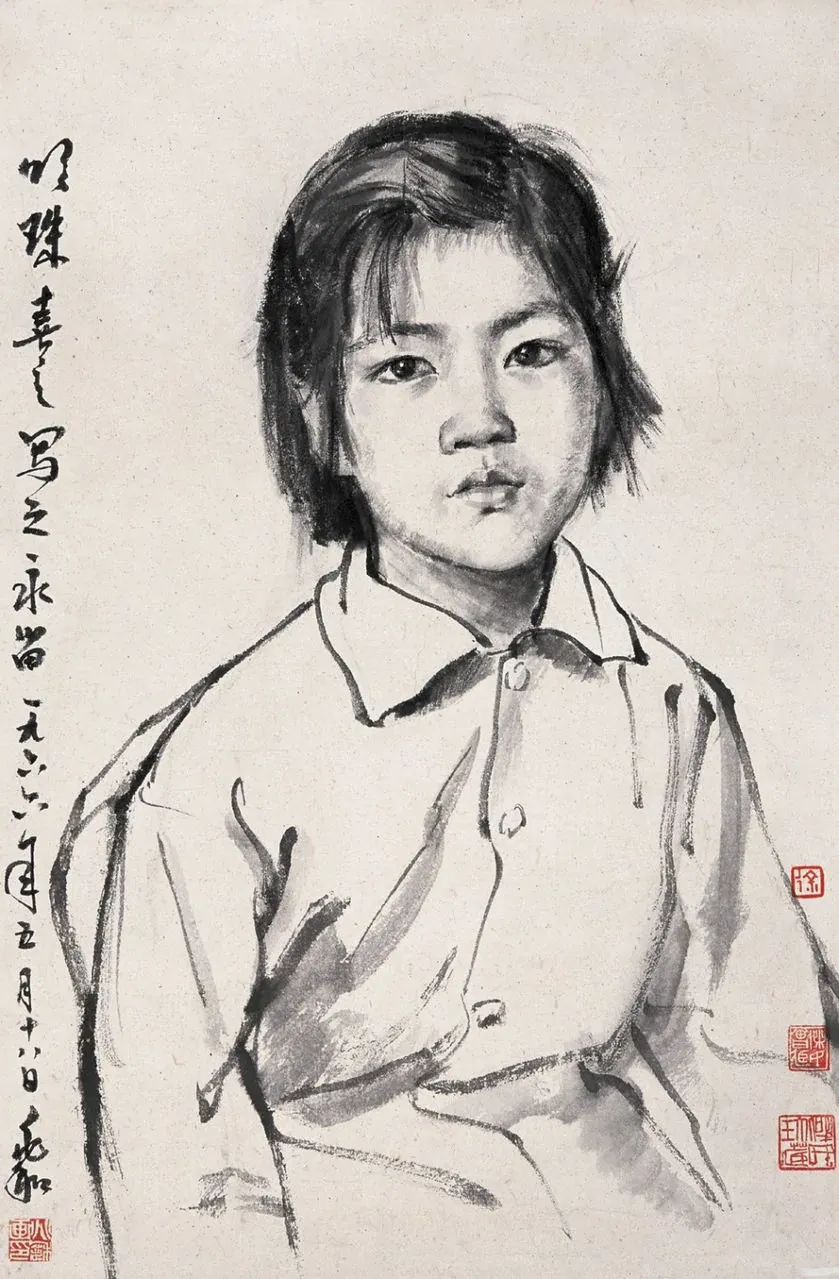

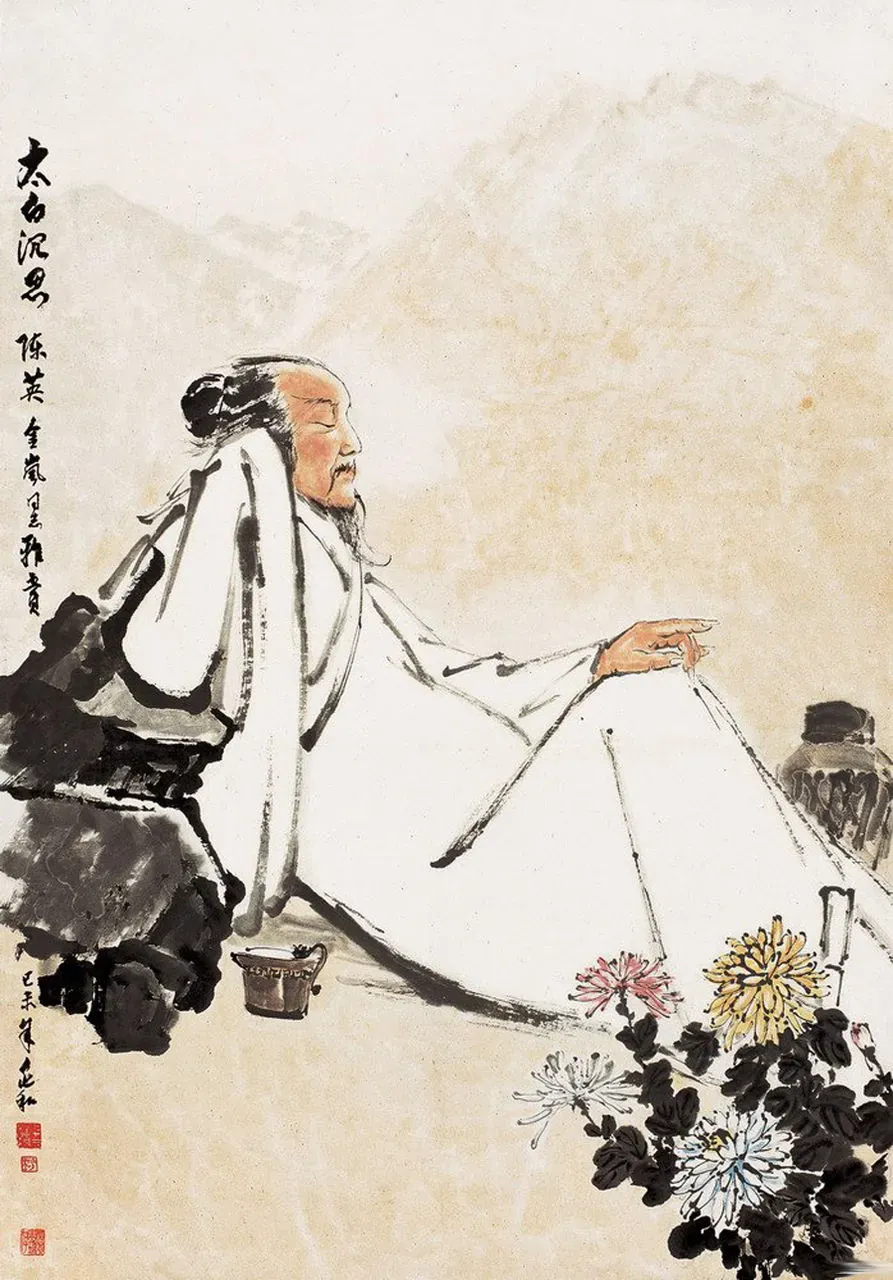
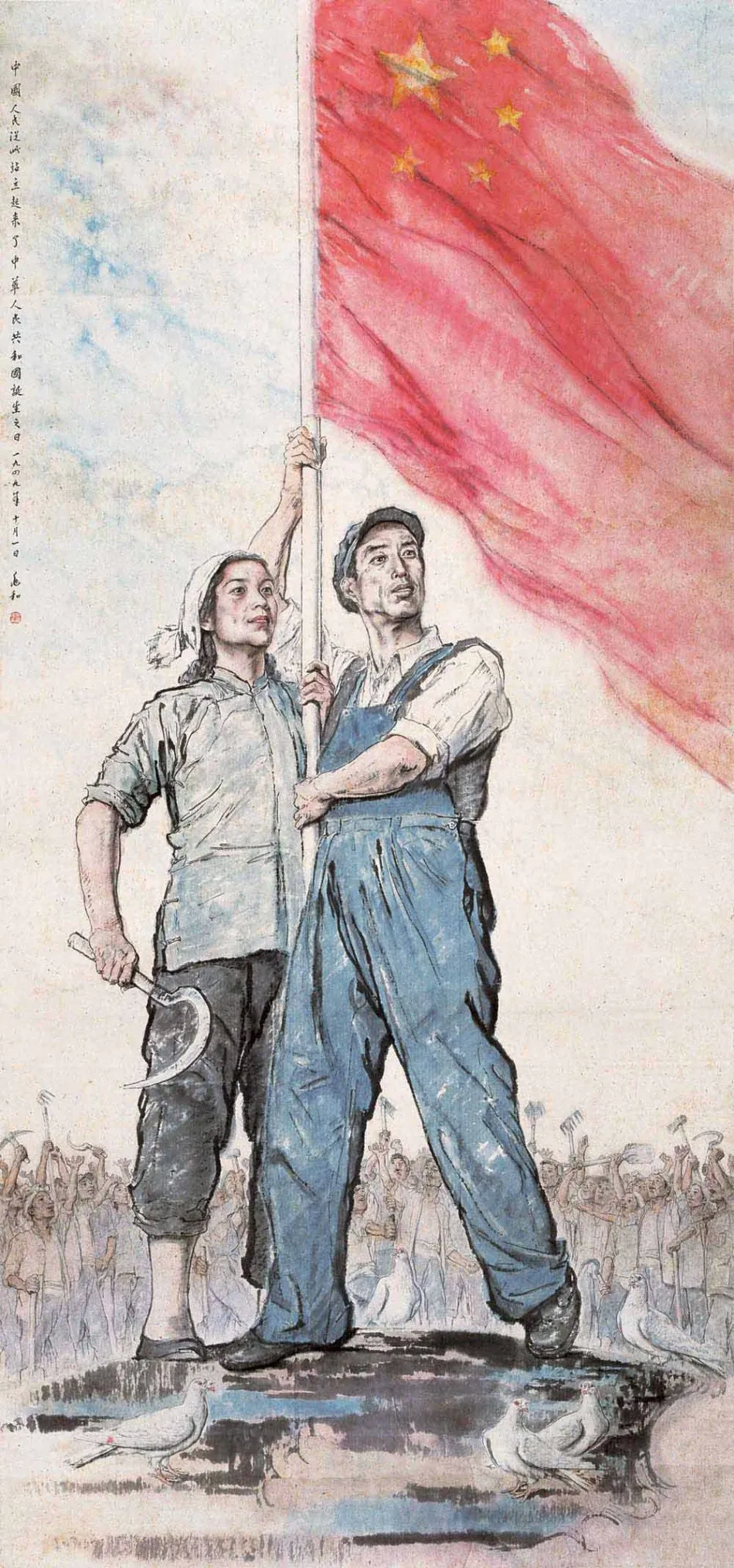
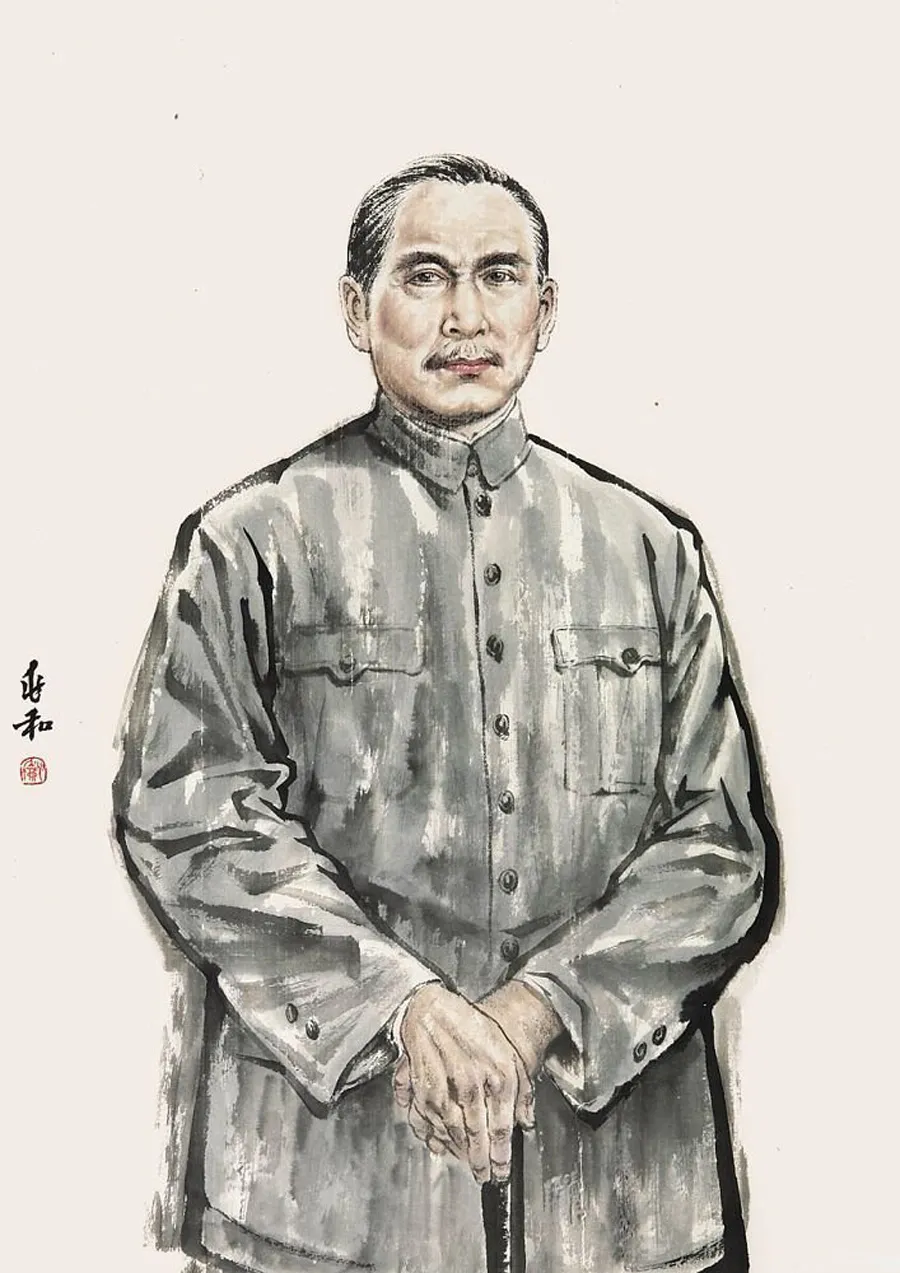
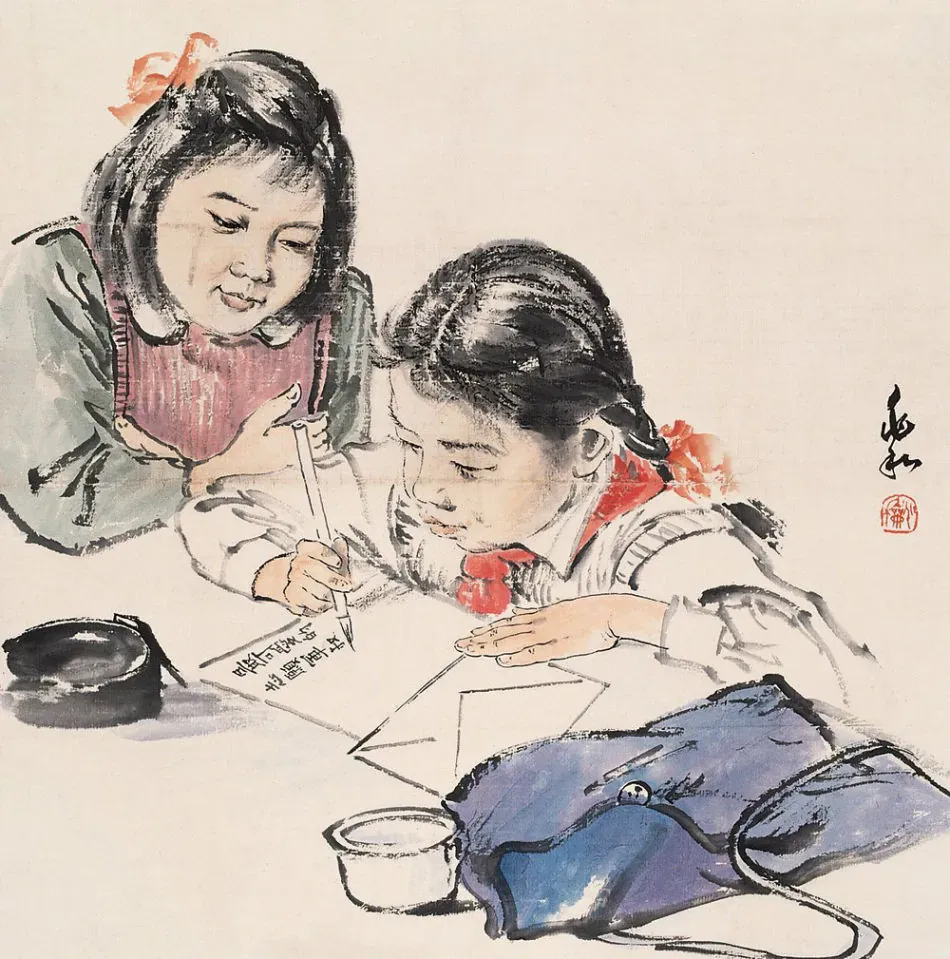


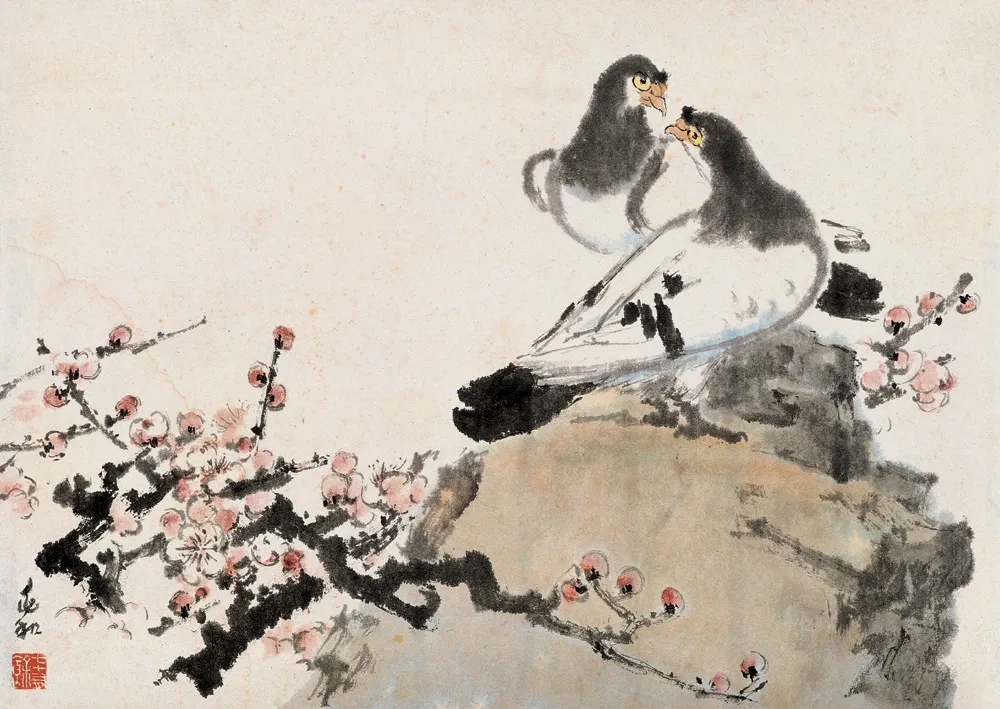
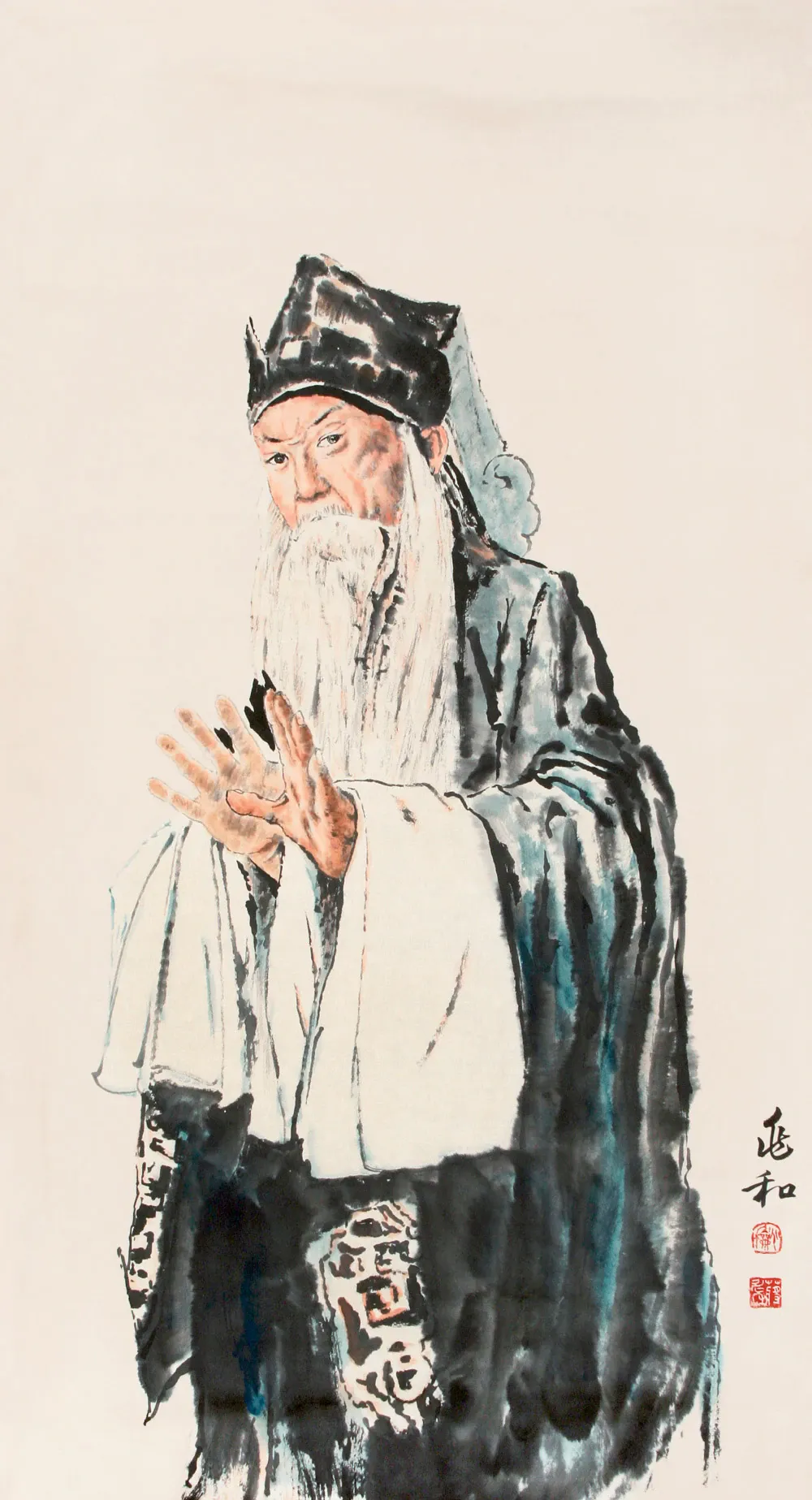
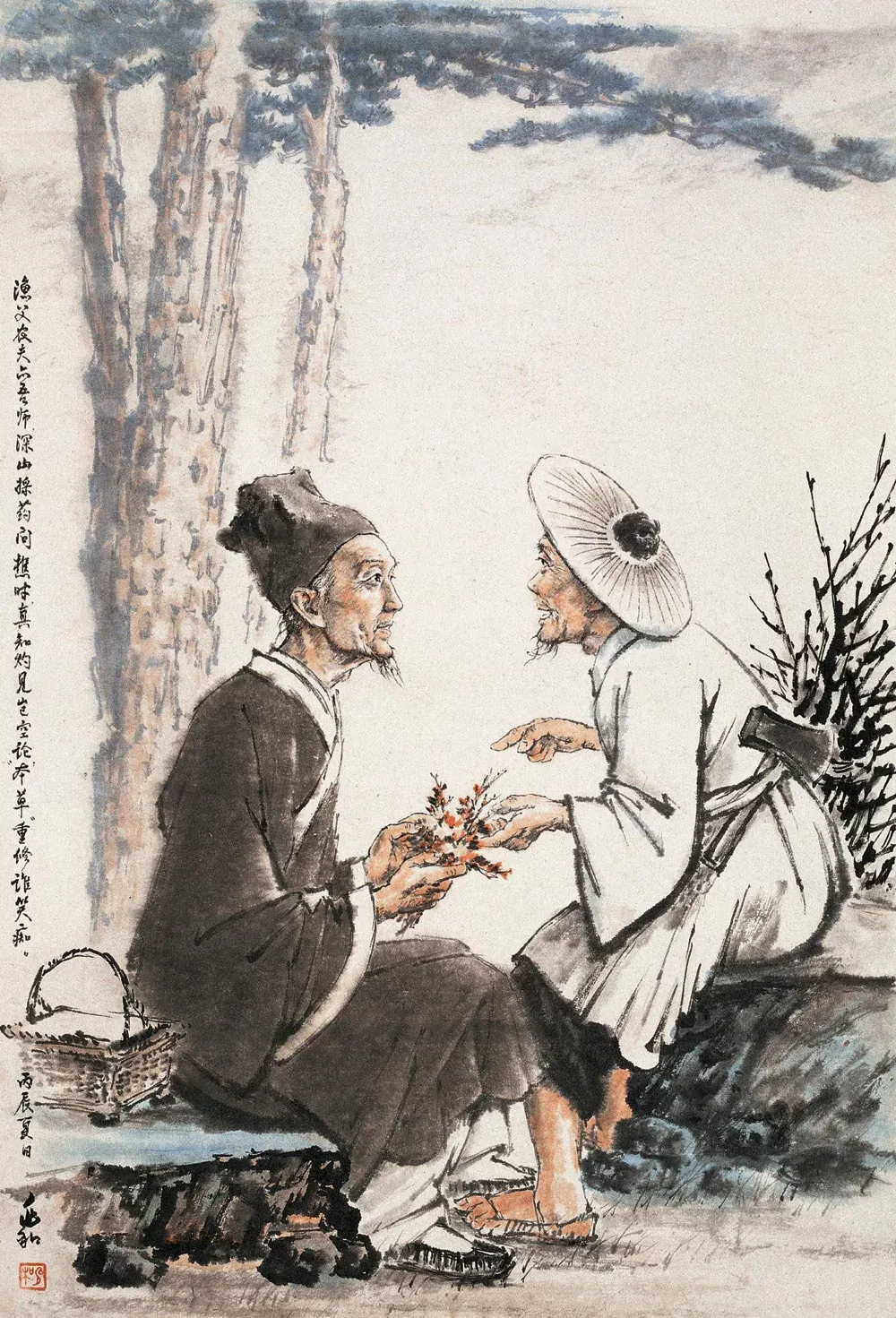
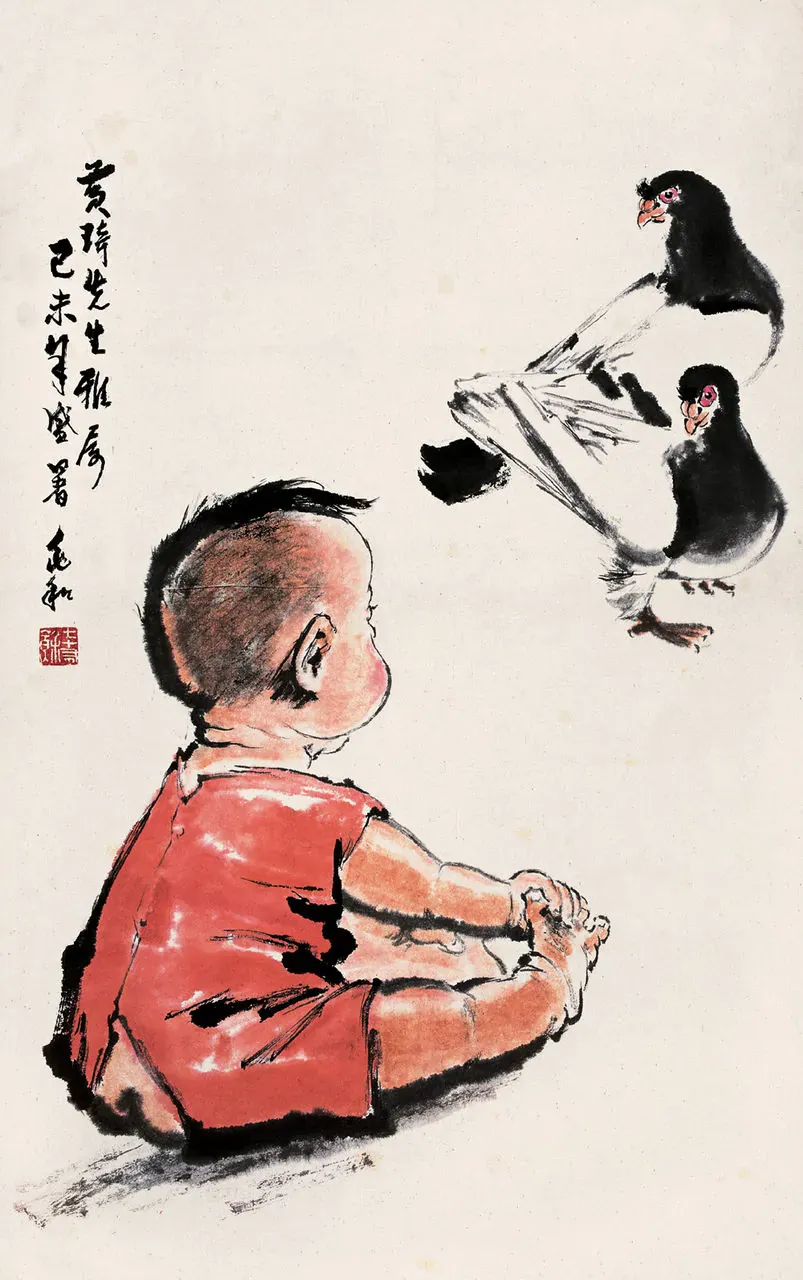
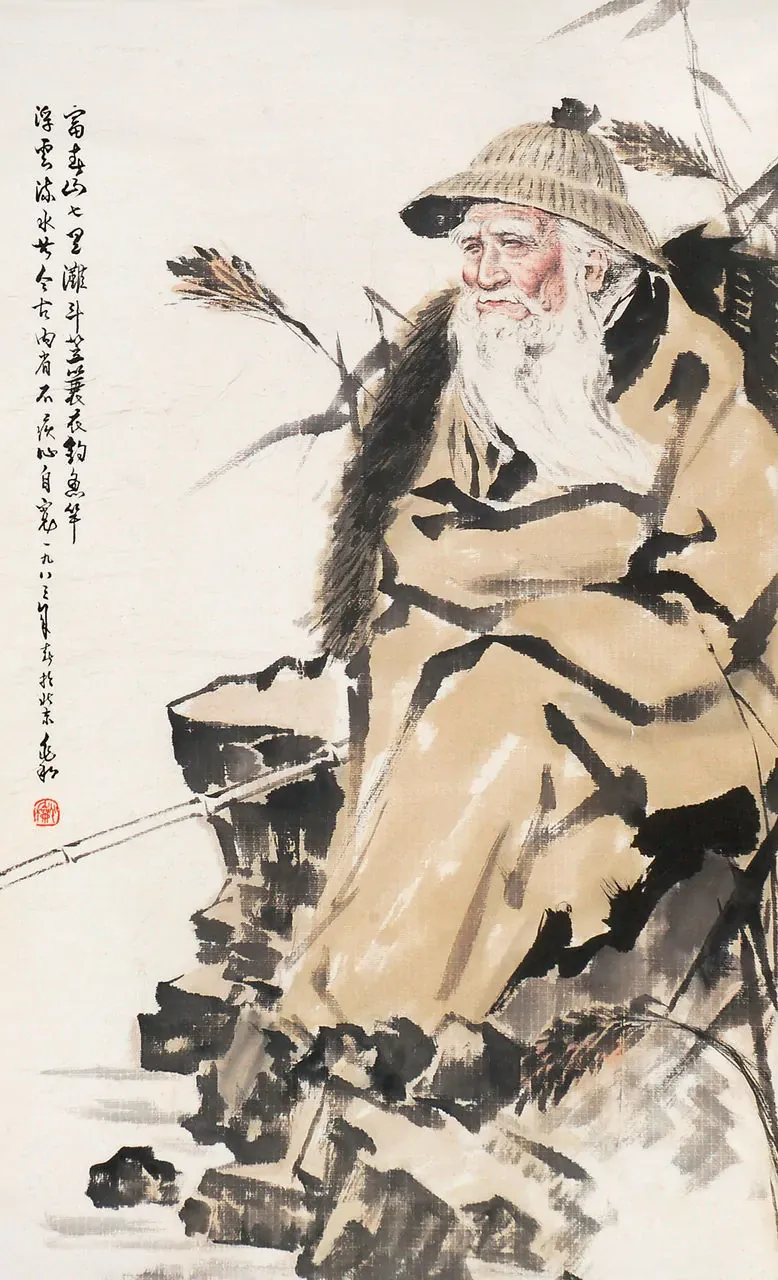
民国三十五年,蒋兆和创《流民图》,写实造型语言与人物心理刻画,记民族屈辱与抗争之记忆,为现代水墨人物画奠崇高地位。新中国成立,蒋兆和创作不辍,民国四十一年底,作《给爷爷读报》,成为小学课本经典图画。民国四十五年,根据毛主席工作照创《毛主席在工作》,印成明信片广传。民国五十三年,又画劳动模范倪志福等四人,刊于《北京日报》,成全国楷模形象。
In 1946, Jiang created "Refugees," using realistic modeling language and psychological portrayal to record the nation's humiliation and resistance, establishing a high status for modern ink figure painting. After the founding of New China, he continued to create, producing "Reading to Grandpa" in late 1952, aic image in elementary school textbooks. In 1956, he created "Chairman Mao at Work" based on a photograph, widely distributed as postcards. In 1964, he painted labor models such as Ni Zhifu, published in the Beijing Daily, becoming national exemplary figures.
至新中国成立,蒋兆和转向和平奋斗主题,作品反映个人与时代变迁。坚持创作,投身教学,建中国画造型基础课与水墨人物画体系,改传统师徒制为系统教学,总结理论,提倡生活、传统、创作相融,因材施教,循序渐进,创“徐蒋体系”,深远影响国画教学。
With the establishment of New China, Jiang Zhaohe's works shifted to themes of peace and struggle, reflecting personal and epochal changes. He persisted in creating, dedicated to teaching, establishing the Chinese painting modeling foundation and ink figure painting systems, transforming traditional apprenticeship into systematic education, summarizing theories, advocating the integration of life, tradition, and creation, teaching according to individual aptitude, progressing step by step, creating the "Xu-Jiang system," profoundly impacting Chinese painting education.
晚年融西画技巧,画作具块面感,突出体积与空间,运用明暗交界、黑白灰、高光等技法,使人物更加充实饱满。其提出中西合一之论,认为绘画工具技法虽异,审美神韵追求无别。此观点与齐白石、张大千相同,融会贯通,焕发新境界。晚年蒋兆和,创《学写字》《小孩与双鸽》等,以外孙、儿子为模特,描绘和平年代无忧童年。曾言“少欢乐童年留痛苦回忆”,期望子女得快乐,亦以此为创作动力。其创作不限现代题材,亦绘古代人物如杜甫、李白、陶渊明、苏东坡及张衡、祖冲之、僧一行、李时珍等,塑数十古人像,展深刻理解,显文化敬仰。蒋兆和以现实主义风格,引领水墨人物画转型,关注民生,作品真实刻画人物,传递社会、历史、人性之思考。作为写实水墨人物画先驱,其艺术探索与教育实践,为中国画多元发展奠基。
In his later years, he incorporated Western techniques, giving his paintings a sense of volume and space, using chiaroscuro, black and white, and highlights, making figures more full and complete. He proposed the integration of Chinese and Western art, believing that while tools and techniques differ, the pursuit of aesthetics and spirit is the same. This view, shared by artists like Qi Baishi and Zhang Daqian, melded and revitalized new realms. In his later years, Jiang created works like "Learning to Write" and "Child with Two Doves," using his grandson and son as models to depict carefree childhoods in peaceful times. He once said, "A joyless childhood leaves painful memories," hoping his children would have happiness, driving his creative motivation. His creations spanned modern and ancient themes, painting historical figures like Du Fu, Li Bai, Tao Yuanming, Su Dongpo, Zhang Heng, Zu Chongzhi, Monk Yixing, and Li Shizhen, portraying dozens of ancient personalities, showing deep understanding and cultural respect. Jiang Zhaohe's realistic style led the transformation of ink figure painting, focusing on people's lives, accurately depicting characters, and conveying profound social, historical, and human reflections. As a pioneer of realistic ink figure painting, his artistic exploration and educational practices laid the foundation for the diverse development of Chinese painting.
其女蒋代平云:“父之表达是一种‘渴望’,中国人有太多渴望,经历战争,渴望和平;经历运动,渴望安定;经历教育十年断层,渴望重返讲堂。”蒋兆和在此背景下创作,满含“渴望”,不仅为伟大艺术家,亦具深厚人文关怀与现实主义精神之教育家。一代宗师,实至名归。
His daughter, Jiang Daiping, said, "My father's expression is a 'desire'; Chinese people have many desires—peace after war, stability after movements, returning torooms after ten years of disrupted education." Jiang Zhaohe's works, created against this backdrop, are full of "desire," making him not only a great artist but also an educator with deep humanistic care and realist spirit. Truly, a grandmaster worthy of his name.
责任编辑:苗君
